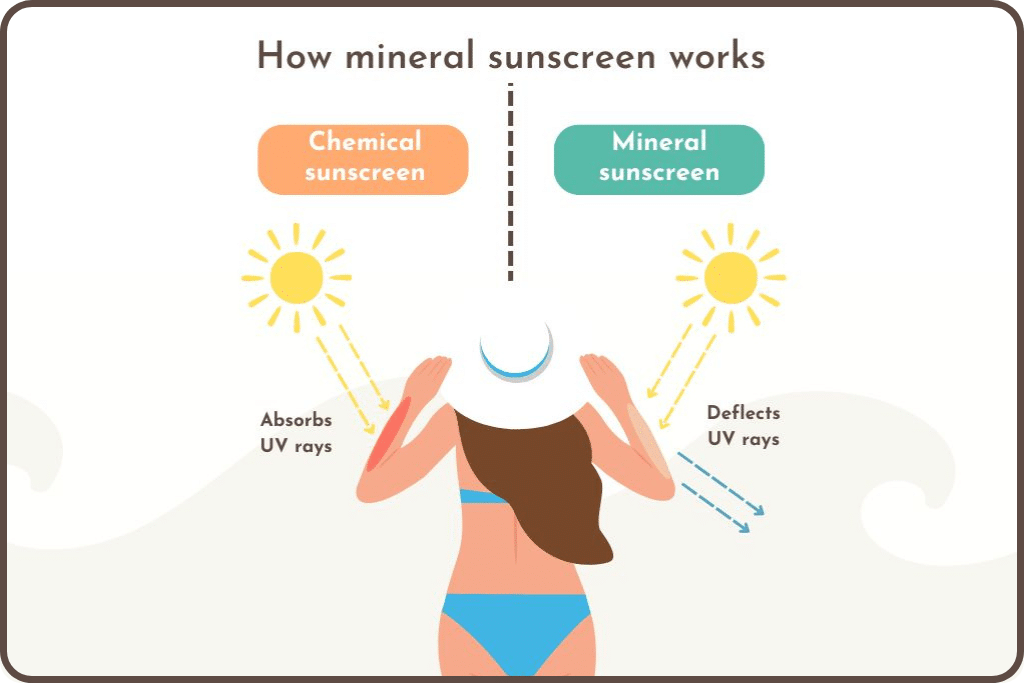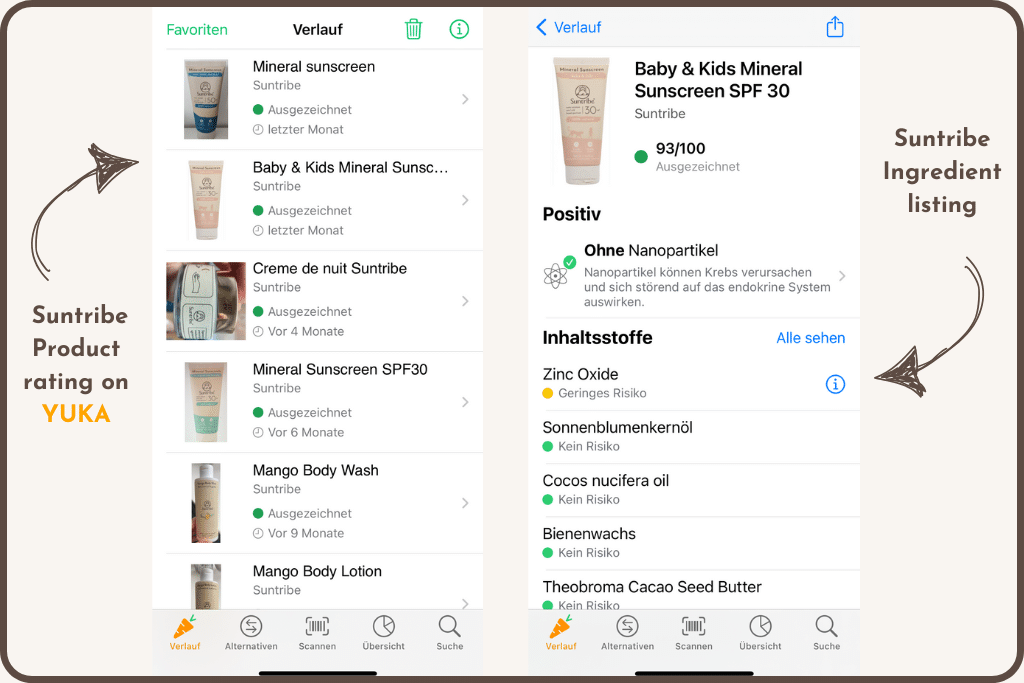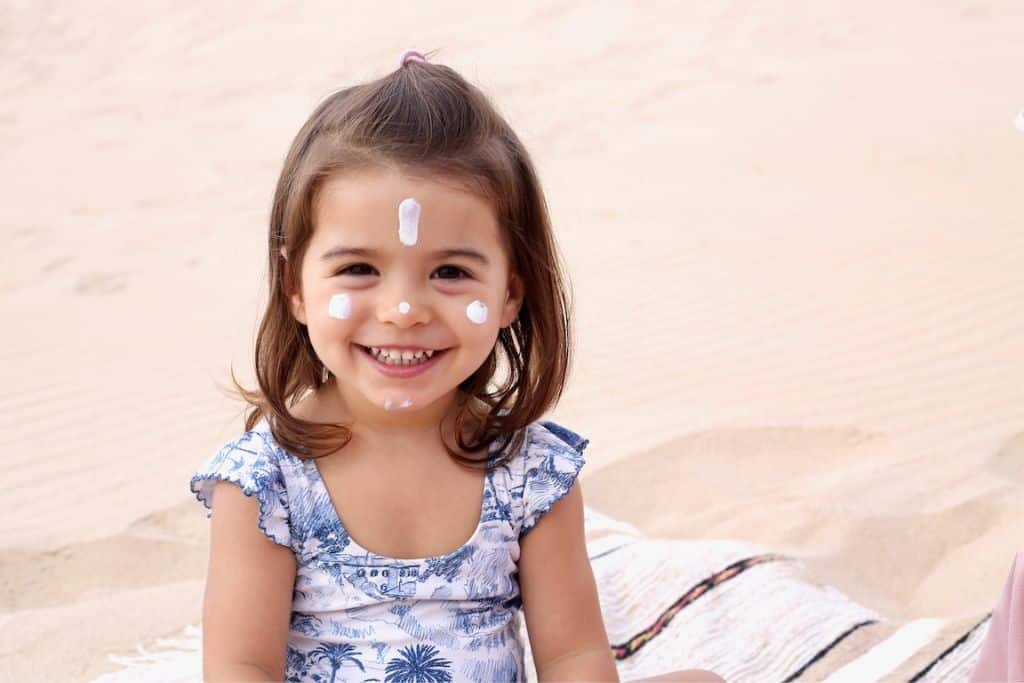Blog
The ultimate guide to choosing a pregnancy-safe sunscreen

By Hanna Oltmanns - April 1, 2025
Being pregnant is an amazing and truly breathtaking experience that many mothers wouldn’t trade for anything in the world. However, it is also a very vulnerable stage, both for mother and baby and during this season, an extra sense of care is required to keep both of them safe. Sun protection is an important part of this – but how do you find a pregnancy-safe sunscreen that truly protects without exposing you to harmful chemicals?
Why should you use sun protection during pregnancy?
During pregnancy, hormonal changes make the skin more sensitive to UV radiation, increasing the risk of hyperpigmentation, premature aging, and skin damage. Hormonal shifts can increase melanin production and excessive sun exposure without protection can increase these pigmentations, making it harder for them to fade after pregnancy. Besides that, a mothers skin becomes a lot more sensitive during that time, increasing the risk of sunburn and lasting skin damage.
What is the problem with chemical sunscreens?
Chemical sunscreens contain synthetic UV-filters like oxybenzone, octinoxate, and avobenzone which absorb UV radiation and convert it into heat to prevent skin damage. While they are effective in protection against sunburn, they have been shown to have a negative effect on human health and put pregnant women and their unborns at risk.
Studies have found that oxybenzone and other chemical UV filters can penetrate the skin and enter the bloodstream where they accumulate over time and be detected in urine, amniotic fluid, and even in breast milk.
These chemicals belong to a group of endocrine-disrupting chemicals, which means they have the potential to mimic or interfere with the body’s natural hormone functions, particularly estrogen and progesterone, which are crucial for a healthy pregnancy.

What are endocrine disruptors and where can they be found?
Endocrine disruptors (EDCs) are chemicals that interfere with the body’s hormonal system, either by mimicking, blocking or altering natural hormone functions. These disruptions can lead to a range of health issues, including reproductive problems, developmental disorders, metabolic imbalances, and increased risk of hormone-related diseases, such as endometriosis.
EDCs can be found in everyday products, including sunscreens, cosmetics, plastic packaging, household cleaning products and even food and water. In personal care products, common endocrine disrupters include parabens, phthalates, and chemical UV filters like oxybenzone and octinoxate.
As these chemicals can be absorbed through the skin, long term exposure can lead to accumulation in the body.
What is Endometriosis and why can it be linked to sunscreen?
Endometriosis is a chronic inflammation condition, where tissue, similar to the uterine lining grows outside the uterus. It affects up to 15% of all women globally and can lead to severe pain, infertility, and hormonal imbalances. Since endometriosis is an estrogen-dependent disease, anything that affects estrone levels has the potential to influence its development or severity, including sunscreens with chemical UV-filters.
Recent studies have raised concerns that endocrine disruptors commonly found in sunscreens and cosmetics, may contribute to a higher risk of endometriosis. Research suggests that women who frequently use beauty products containing EDCs tend to have higher levels of these chemicals in their bodies and are more likely to develop endometriosis. Since chemical sunscreens contain UV-filters like oxybenzone, octinoxate, and avobenzone – known endocrine disruptors – daily sunscreen use could be a significant source of exposure.

What is Hirschsprung's disease and why can it be linked to sunscreens?
Hirschsprung’s disease is a birth defect that affects a baby’s intestines, making it hard for them to pass stool. This happens because certain nerve cells that help the bowel function properly are missing, leading to severe constipation, swelling, and blockages. In most cases, surgery is needed to remove the affected part of the intestine.
Recent studies, including research from Haereticus Environmental Laboratory, suggest that a common chemical in sunscreen called oxybenzone may increase the risk of Hirschsprung’s disease. Scientists have found high levels of oxybenzone in the urine of pregnant women whose babies were later diagnosed with the condition, meaning the chemical can enter the mother’s bloodstream and reach the baby during pregnancy.
“A pregnant woman who follows the instructions for the recommended use of sunscreen products containing 6% oxybenzone (two 1-ounce application of sunscreen) could have concentrations of oxybenzone and fetal blood levels reach as high as 3,800 part per billion in the woman, and 384 parts per billion in the fetus. These concentrations of oxybenzone can potentially cause these toxic cellular changes, and give rise to Hirschsprung’s Disease.”
Joe Dinardo, researcher from Heareticus Laboratory
Because oxybenzone stays in the body for weeks, experts recommend that pregnant women—or even those trying to conceive—avoid chemical sunscreens.

Which ingredients should pregnant women avoid?
“[…] Fetal development is an incredibly sensitive process that can be altered with the introduction of endocrine disrupting chemicals like oxybenzone. […] especially pregnant women and mothers should avoid all products with oxybenzone, and should instead seek out natural, organic skincare that does not rely on chemicals like these.[…]”
Lana Adler, environmental health educator
During pregnancy, women should be cautious about several chemical UV-filters and additional endocrine-disrupting chemicals that are commonly found in skincare and sunscreens.
Chemical UV-Filter to avoid:
- Oxybenzone – Linked to hormone disruption and detected in amniotic fluid, breast milk, and fetal blood.
- Octinoxate (Ethylhexyl Methoxycinnamate) – Can mimic estrogen and potentially interfere with pregnancy hormones.
- Avobenzone – May degrade in sunlight and form harmful byproducts.
- Homosalate – Shown to accumulate in the body and disrupt hormone regulation.
- Octocrylene – Can break down into benzophenone, a potential carcinogen and endocrine disruptor.
Additional ingredients to avoid:
- Retinoids (Retinol, Retinyl Palmitate, Retinoic Acid) – Excessive vitamin A intake has been linked to birth defects.
- Parabens (Methylparaben, Propylparaben, Butylparaben, etc.) – Can mimic estrogen and may impact fetal development.
- Phthalates – Common in synthetic fragrances, these chemicals can disrupt reproductive hormones.
- Formaldehyde & Formaldehyde-Releasing Preservatives – Found in some skincare products and linked to toxicity concerns.
- Hydroquinone – A skin-lightening agent that absorbs into the body at high rates.
- Toluene – Found in nail polish and associated with nervous system toxicity.
For a full guide on toxic sunscreen ingredients to avoid, head over to our detailed article on the topic: 11 toxic sunscreen ingredients to avoid in 2025

How to choose a pregnancy safe sunscreen
Experts continuously recommend using natural and organic sunscreens during pregnancy that do not rely on chemical UV-filters.
⇒ choose a mineral sunscreen which sits on top of the skin rather than being absorbed into the skin and bloodstream
⇒ choose broad spectrum protection – sunscreens with non-nano zinc oxide provide excellent UVA & UVB protection without breaking down in the sun
⇒ choose a mineral sunscreen with organic ingredients that is gentle on your skin to be less likely to cause irritations
When choosing a sunscreen, be sure to always check the ingredient list at the back of the packaging. We know that chemical names can be overwhelming and half the time many people do not even know what the listed terms are supposed to mean. This is where apps like Yuka and INCI Beauty come in handy.
⇒ Yuka allows you to scan product barcodes and immediately see an ingredient safety rating, helping you to avoid potentially harmful or hormone disrupting components.
⇒ INCI Beauty provides detailed insights into each ingredient and rates them based on their toxicity, allergens, and environmental impact

If you want to learn more about how both beauty apps work and how to use them to evaluate skin care ingredients, check out our blog article on “Suntribe scores on INCI Beauty & Yuka”
Are Suntribe sunscreens pregnancy safe?
Yes! Suntribe sunscreens are pregnancy-safe and formulated with 100% natural and organic ingredients that have been proven to be safe for both mother and baby. Instead of using chemical UV-filters, we only use Non-Nano Zinc Oxide as the active UV-filter.
Here is why you can trust our sunscreens during pregnancy:
✔️ Non-Nano Zinc Oxide – According to the latest state of research the safest choice for both humans and the environment
✔️ No chemical UV-filter – Suntribe’s formulas pose no risk of hormone disruption
✔️Gentle, natural ingredients – Made with organic oils, butters, waxes, minerals, and vitamins, containing no synthetic additives or preservatives
✔️ Instant protection – Zinc Oxide as the mineral UV-filter creates a protective barrier on top of the skin from the first moment of application

The bottom line
Staying safe in the sun during pregnancy is just as important for your baby as it is for you. While protecting your skin from UV damage, hyperpigmentation, and premature aging is essential, not all sunscreens are equally safe to use. Many chemical sunscreens contain UV filters like oxybenzone and octinoxate, which have been found in amniotic fluid, breast milk, and fetal blood – raising concerns about their impact on hormone balance and fetal development.
The good news? You don’t have to choose between effective sun protection and safety. Mineral sunscreens with Non-Nano Zinc Oxide offer broad-spectrum UVA & UVB protection, sit on top of the skin instead of being absorbed, and are free from harmful chemicals. When choosing a sunscreen, always check the ingredients list – and if you’re unsure, tools like Yuka and INCI Beauty can help you make informed choices.
At Suntribe, we believe in keeping things simple, safe and natural – so you can enjoy the sun without worrying about hidden chemicals.
Want to continue reading?
About the author
Hanna is Suntribe’s Head of Customer Happiness and the warm voice behind our support. As a mother of soon-to-be three, she has mastered the art of balancing family life with her love for the outdoors, soaking up every sunbeam she can. Her days often begin slowly, with a cup of tea, fresh air, and a bit of yoga before the world wakes up. And when it comes to Swedish fika, Hanna delights in home-baked treats shared with loved ones — a tradition she treasures just as much as helping Suntribe’s community feel cared for.



